The Story of King Arthur
Mark Twain. "Yankee at the court of King Arthur"
King Arthur is a knight from a legend. Did he look like what the writer Mark Twain described to us in his witty and amusing book “The Yankees at King Arthur’s Court” or something else? And what is really known today about King Arthur and the Knights of the Round Table? Whether story about them beautiful fiction or is it based on real historical events? And is it possible to believe what the directors of cartoons and popular movies shoot about them? We will tell you about all this now.
“Death of King Arthur. A hand from the lake takes his sword. ” It is not entirely correct, perhaps, to place in the beginning of the material an illustration depicting the death of the main character of the article. But ... she is very impressive. In addition, there are no illustrations of King Arthur’s own time at all. And all that appeared no later than the fiction of their authors. Thumbnail from the Death of Arthur manuscript, Saint-Omer's 1316 or Tournai. (British Library, London)
About kings and knights. History on request!
Well, we will begin by recalling the English proverb that "many hands are doing everything better." And indeed it is. I didn’t even have thoughts to write about King Arthur and his knights, until ... this topic did not interest one of the readers of "VO", and he did not ask me to take up this topic. After that, it turned out that, firstly, it was not only interesting in itself, because, secondly, it was also directly related to the “knightly theme”. True, her chronological framework is somewhat different, but it is impossible, after all, to be a pedant to that extent. In addition, the topic was so fascinating that I must say that I enjoyed working on it very much.
How do we know about arthur?
Now let's talk about the most important thing in our history. And how do we even know at least something about King Arthur and the Knights of the Round Table? Of the popular telemultivok, ancient legends and manuscripts, or is it all one continuous extrasensory perception, as, for example, in Alfred Bester's novel A Man Without a Face? Let's try to get to the very foundations of the legends about Arthur, and then we will also see what time it was for England, what was important in this country, and what great Arthur really did, of course, if his actions were not fiction. .
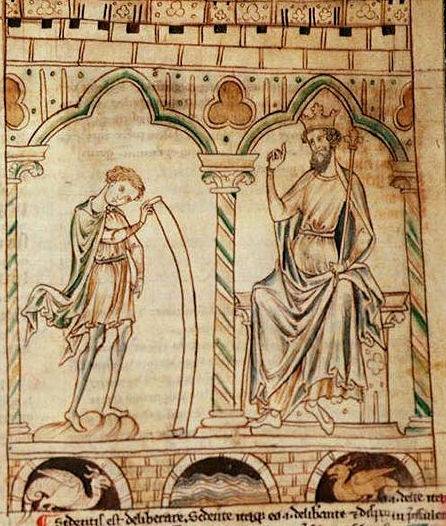
Merlin reads his prophecies to King Vortigern. "The History of the Kings of Britain." Jeffrey of Monmouth. (British Library, London)
Poem, peer hero, and other written sources
Well, it has long been known that the name of Arthur was first found in the poem “Wai Gododin”, by the Welsh bard Aneurin, which dates from about 600 a year. It describes the battle of Katraet in which the Anglo-Saxons fight with the kings of the "Ancient North". And that's where it comes to King Arthur, a valiant warrior who has accomplished many feats. The leader of the Britons is compared with him in this poem. That is, we are talking about a person whom everyone should know, since comparing with the unknown is nonsense. In another Welsh poem, The Annuna Trophies, attributed to the bard Taliesin, Arthur’s journey to the Welsh otherworld of Annun is described. According to linguistic analysis, its text refers to the 900 year. That is, between these two poems there is a difference in 300 years. And the fact that the image of Arthur during this time did not fade and was not forgotten speaks only about one thing - its prevalence and significance.
In the Annals of Cumbria, dating back to the second half of the 10th century, Arthur’s name is mentioned in connection with the Battle of Badon in 516 and under Camland in the 537, that is, it indicates in a certain way the time in which he lived, namely, the 6th century .
Arthur’s whole pedigree as a king, who inherited power from well-born ancestors, is set out in the Mostun manuscript dating from the end of the 13th century. and which is stored in the National Library of Wales. It is also found in a number of other manuscripts, so that who he is and whose son is known for certain. But again, it is known only from these written sources. In the same manuscript “Mostun” the following was written: “Arthur is the son of Uther, the son of Kustennin, the son of Kinhaur, the son of Tudwal, the son of Morfaura, the son of Eudaf, the son of Cador, the son of Kinan, the son of Caradog, the son of Bran, the son of Llyr the Little Resolute”. However, all these figures are semi-legendary. Their real existence, like Arthur himself, by the way, is essentially not proven by anything. Although ... there is still something tangible for today ...
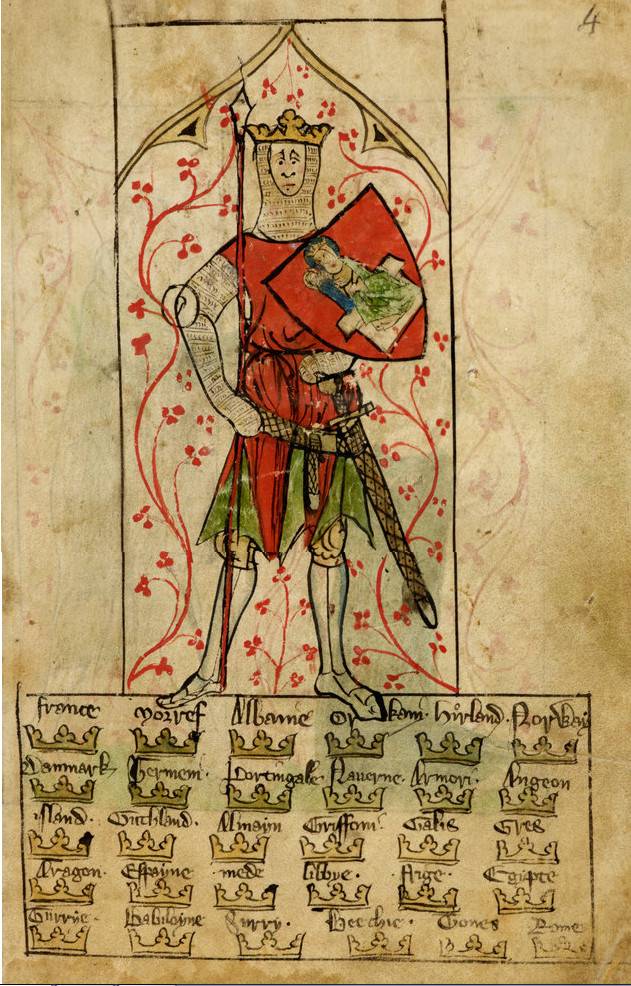
"King Arthur". Peter de Langtoft. "Chronicle of England" approx. 1307 - 1327 (British Library, London)
Stones and inscriptions
This is found in the cultural layer of the Tintagel castle, and dating back to exactly the 6th century. that is, the era of King Arthur, a stone with an inscription made in Latin inscribed on it: “Kohl’s father made it, Arthugna, a descendant of Kohl, made it”. According to archaeologist Gordon Meihena, part of the letters in this inscription is missing, which was typical of the inscriptions of that time. Therefore, it should be read like this: “Arthugnu erected this stone in memory of his forefather Kolya”. Well, King Kohl is another semi-mythical king of Britain who lived in the 4th — 5th centuries. n er If we assume that Arthugnu is a distorted name of Arthur (or Arthur is a distorted name of Arthugnu), then ... we have an artifact in which not on paper, but on a stone, the real existence of a person with that name is attested. But nothing more! Alas, there is no evidence that Arthur and Arthugna are the same person.
The same stone, although the inscription and subtle ...
There was also the so-called "Tomb of Arthur". Another 1191 year during the repair in the abbey in Glastonbury found the grave of a man and a woman, on the plate of which they discovered the name of King Arthur. For many years pilgrims from all over Britain came to her. But in 1539, the monastery was dispersed, and today only ruins are preserved from it. The grave, too, was not preserved, but in the place where it seemed to be located for tourists, a sign was made. And that's all for today!
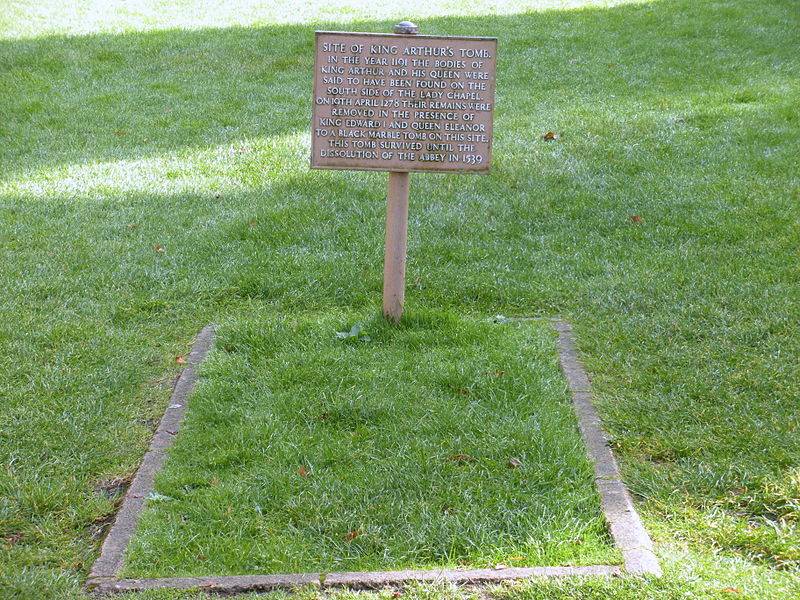
That same grave, or rather all that is left of it ...
"History of the Britons" Nennia
Well, the first historical document, and not the poem in which King Arthur is mentioned, is the “History of the Britons”, dated approximately 800 year, and written by a Welsh monk named Nenniy in Latin. Many British scientists believe that he used the folk legends about him that had spread in Wales. In the "History" of Arthur it is said that he won twelve victories over the Saxons, and finally defeated them in a battle at Mount Badon.
Tintagel Castle Ruins in Cornwall
However, the description of Arthur from Nennia is very contradictory. On the one hand, Arthur is the leader of the Christian Christians against the Saxon invaders, and on the other ... clearly a magical figure. This, however, did not prevent Jeffrey of Monmouth from including Arthur in his History of the Kings of Britain, written in the first half of the 12th century. He wrote about him as an absolutely historical character that existed, but the reliability of his work nevertheless raises great doubts among historians.
"King Uther Pendragon arrives at Tintagel." Thumbnail on the page from the manuscript of Robert Weiss's “Dry Narration, with a sequel to Edward III; The destruction of rome; Fierabras. Second quarter of the 14th century (British Museum, London)
“The Story of the Kings of Britain” by Geoffrey of Monmouth.
So, Jeffrey wrote that Arthur lived in the 6th century AD, which was already known, and then turned him ... into a victorious leader who was king of all Britain and conqueror of most of Northern Europe. His court attracted the most daring knights from all over the Christian world, and he himself was the epitome of chivalry. Jeffrey either visited Tintagel himself, or knew someone who was there and simply told him the legends about King Arthur in those places. Apparently, this is exactly how a message appeared about how, with the help of magic, King Uther entered Tintagel Castle, defeated his master Gorlua and married his wife, or rather, his widow, Igternis. And that Arthur was conceived and was born in Tintagel, which, of course, could not fail to flatter the inhabitants of the village of the same name, which was located near its ruins. Here, however, there is one important circumstance. Either we believe in magic, and then everything was exactly that. Either we do not believe - and then all this could simply not be, or it all was completely different.
King Uther Pendragon talks with Merlin. Peter de Langtoft. "Chronicle of England" approx. 1307 - 1327 (British Library, London)
Literary translation by Robert Weiss
Geoffrey’s rather peculiar “historical work” was translated into Norman-French in 1155 by Robert Weiss of Jersey, who added his own inventions and, in particular, a description of King’s famous “Round Table”, and here he also has Arthur’s sword first called Excalibur. As a result, it was this book that found fertile ground at the court of Henry II and all subsequent English kings and, by the way, was repeatedly rewritten. Heinrich's own grandson and builder of the new Tintagel castle - Richard, Count of Cornwall - was also brought up on stories about Arthur, and it is not surprising that he built his castle in this very place. Legend gave the English kings a role model, which ultimately led to the creation of the Order of the Garter by King Edward III, who clearly wanted to somehow remind the glorious King Arthur.
Skeptic William of Malmesbury
A contemporary of Geoffrey of Monmouth, William of Malmesbury, also did not doubt the reality of Arthur’s existence, but he treated him as a historical figure with great caution. In the extensive work The Chronicle of the Kings of England, he devoted only a few lines to King Arthur, and he accomplishes his feats with the Roman Amvrosy Aurelian. Here is what he says: “Ambrose, the only survivor of the Romans, who became king after Vortigern, suppressed the arrogant barbarians with the help of militant Arthur. This is the Arthur, about whom the British naively tell a lot of tales, even today, a man who is certainly worthy of glorification, not only because of empty fantasies, but for the sake of a true story. He supported the sinking state for a long time, and urged the broken spirit of his countrymen to war. Finally, in the battle at Mount Badon, relying on the image of the Holy Virgin, which he attached to his armor, he joined the battle with nine hundred enemies alone and scattered them with incredible cruelty. "
In this message, of course, the most important is the mention of the image of the Holy Virgin. He attached it to the armor, and won. Everything is exactly the same as in the medieval Russian chronicles, in which the appeal to the saints and the mention of God's help are found in almost every second paragraph.
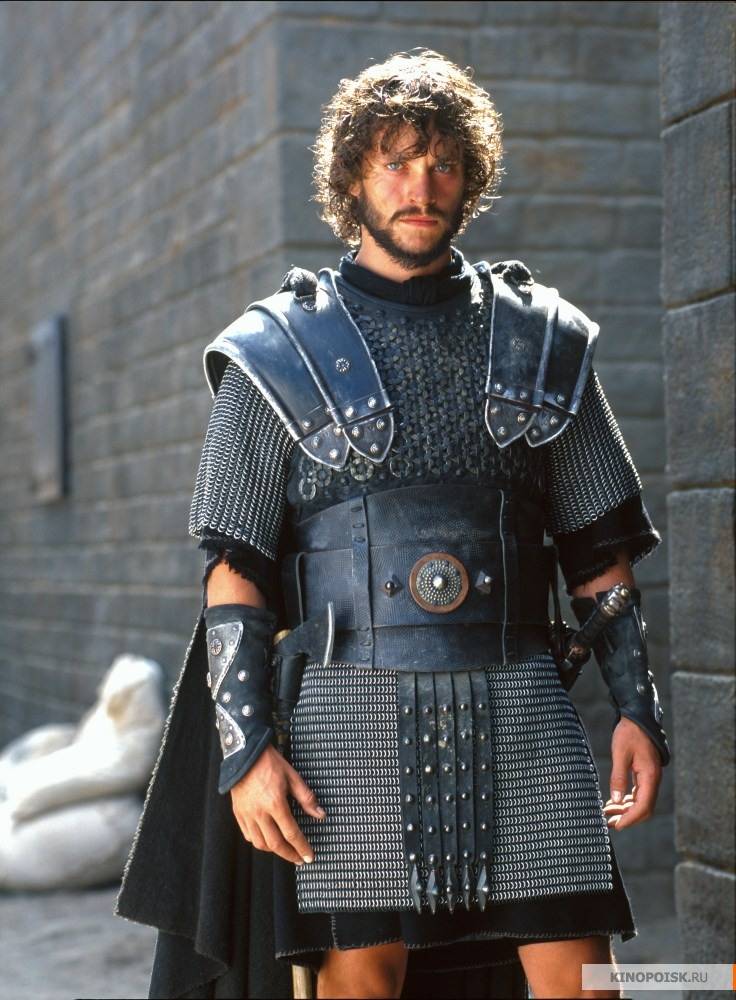
Film version of the image of Arthur 2004. In it, he is shown by a Roman, well, and the equipment he was dressed in was still quite tolerable in this connection ...
At the end of his story, William of Malmesbury writes about all this very revealingly: “Truth, therefore, is vague; although none of these people was lower than the glory that they gained. " That is, he simply said in other words that the truth is always somewhere out there!
Использованная литература:
1. Roger Middleton. 'The Manuscripts' in The Arthur of the French, ed. by Glyn S. Burgess and Karen Pratt, Arthurian Literature in the Middle Ages, 4 vols (Cardiff: University of Wales Press, 2006), IV.
2. Pamela Porter. Medieval Warfare in Manuscripts (London: British Library, 2000)
3. David Nicolle. Arthur and the Anglo-Saxon Wars (Anglo-Celtic Warfare, AD 410-1066). L .: Osprey Pub., (Men-at-Arms series No.154), 1984.
To be continued ...
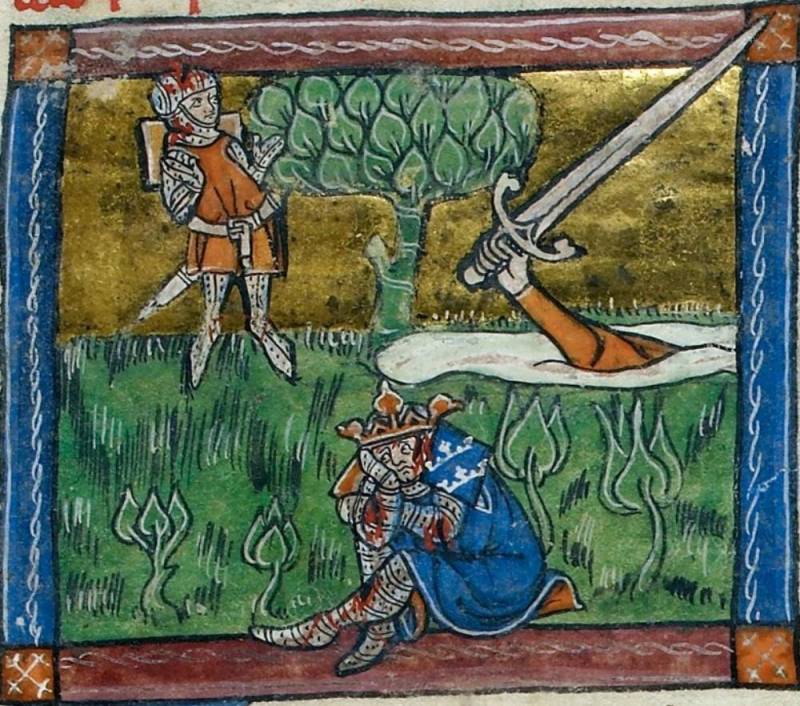
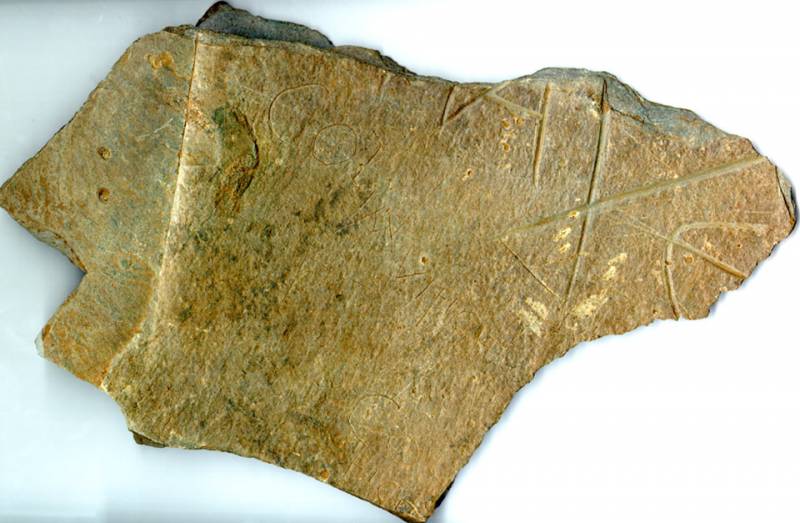

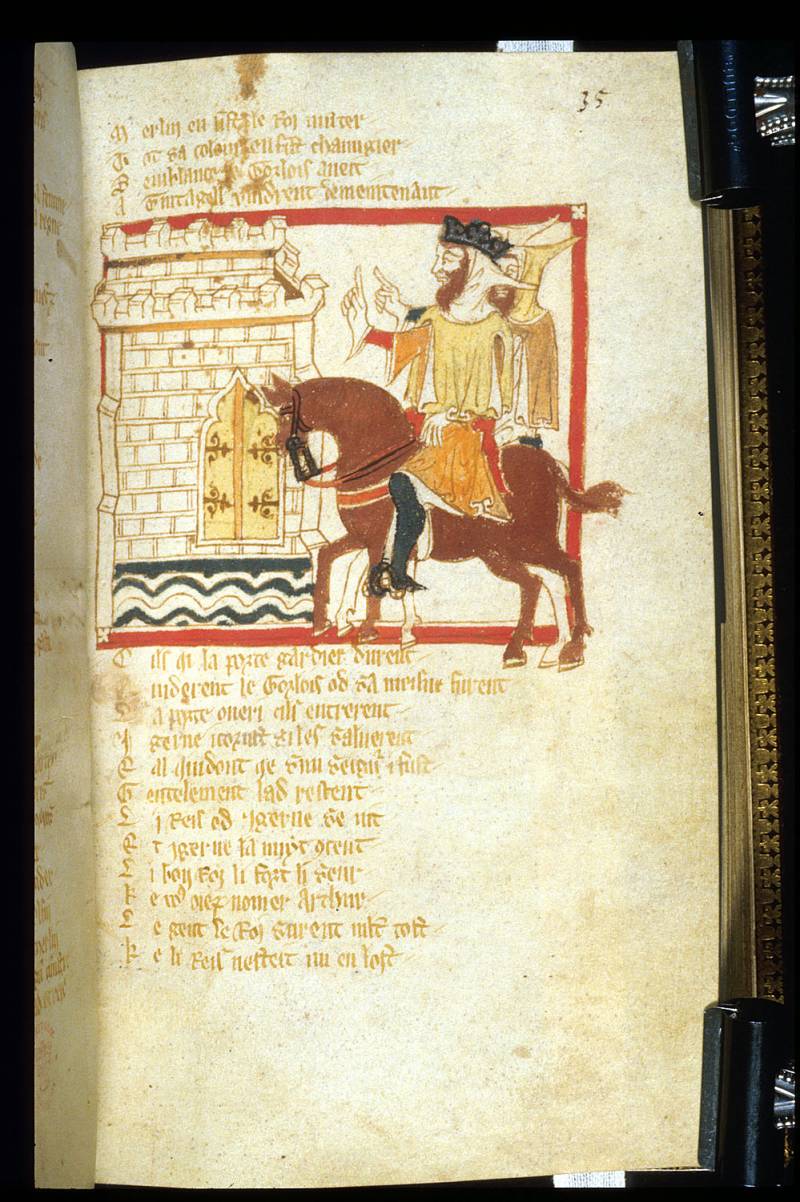
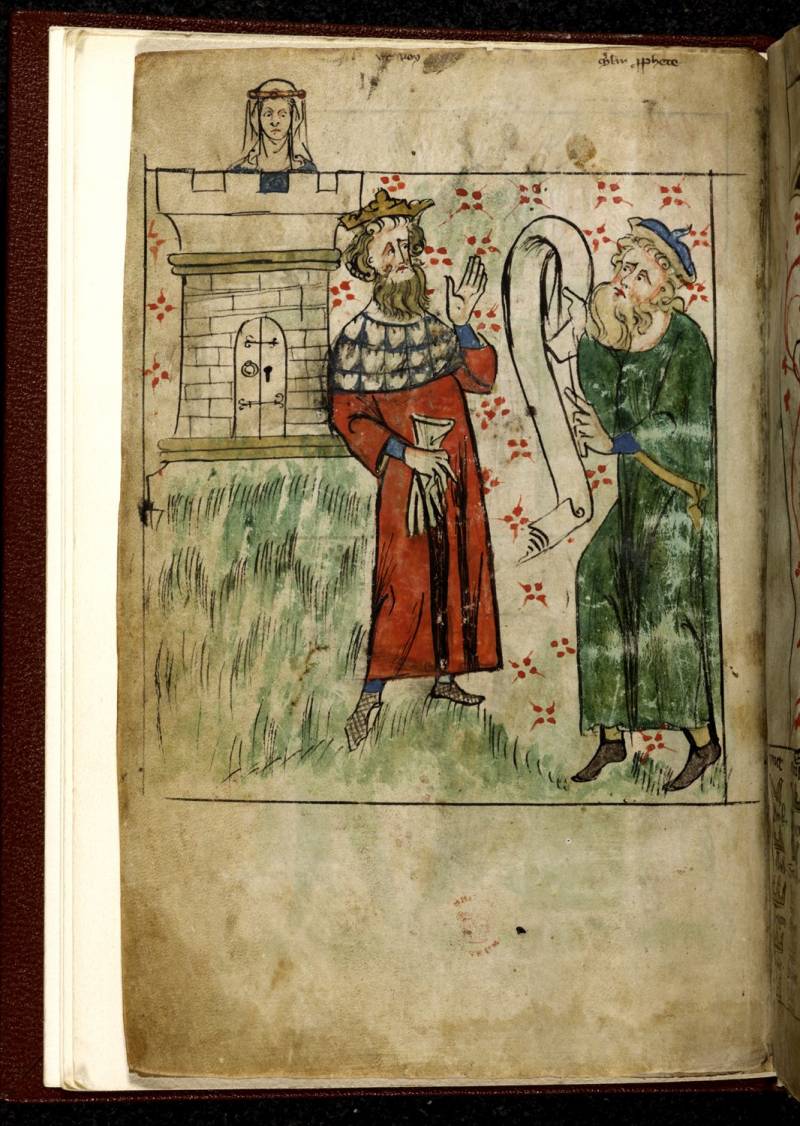
Information